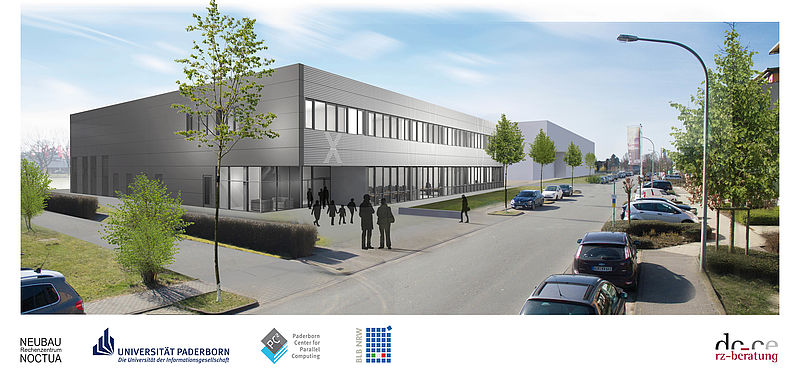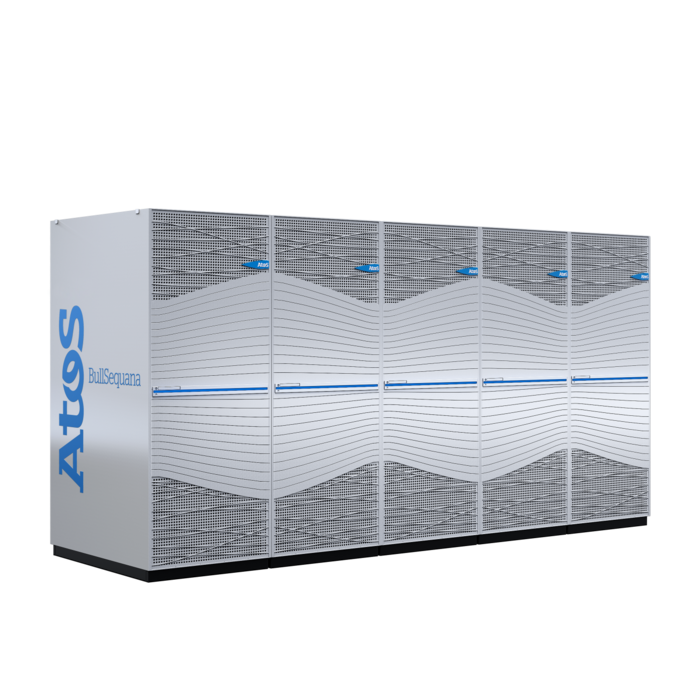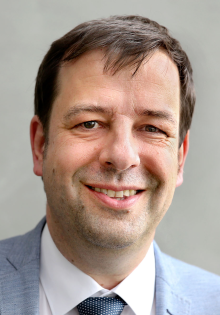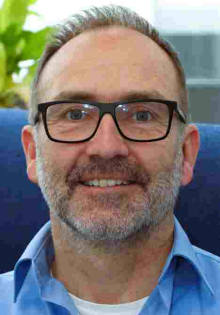140,000 processing cores, the very latest generation of high-tech features, and compact enough to fit inside a squash court – Paderborn University is getting a new supercomputer. “Noctua 2,” the project name given to the second expansion stage of the “Noctua” installed in 2018, will be built by market leader Atos and is expected to be installed by the end of the year. With a total financing volume of more than 14 million euros, it will be the first supercomputer to move into the new HPC (High Performance Computing) facility at the Paderborn Center for Parallel Computing (PC2). The research building is nearly completed. Half of the HPC system is being financed by the State of North Rhine-Westfalia and the federal government’s research buildings program, as well as through investment resources from the newly founded Verbund der Nationalen Hochleistungsrechenzentren (Association of National High Performance Computing Centers, NHR), which Paderborn University joined at the beginning of the year.
Atos will deliver, assemble and install Noctua 2, which will be operated by the PC2, and will also handle maintenance of the system for the next five years. The PC2 has extensive experience with operating massive parallel computer systems and high-performance computing (HPC). Researchers there have been studying the efficient use of supercomputers for many years already, and they operate high performance computer systems that serve university researchers throughout the entire Ostwestfalen-Lippe region and nationwide as part of the NHR association. “With Atos, we have an industry-leading partner at our side. The Paderborn Center for Parallel Computing gives top researchers access to ultramodern computing capacity. In order to take the next step toward future security in this area, we need experienced experts to help us develop and operate energy-efficient HPC systems. Atos impressed us with its decades of experience,” says Prof. Dr. Christian Plessl from Paderborn University and Chair of the PC2.
The new system from Atos has very low overall operating costs, in particular thanks to the free-cooling feature of the BullSequana XH2000. Its patented direct liquid cooling (DLC) process uses 100 percent hot water, which means it consumes less energy than comparable systems and reduces overall energy consumption. For the university, that means energy-efficient operation of the high-performance systems. Using the state-of-the-art Atos technology will give Paderborn University the necessary foundation for high-quality, timely and flexible data analysis. The use of innovative technologies also means long-term investment security for the university, and covers the greatest possible range of applications – for instance extensive simulations for physics and chemistry or machine learning, all of which require enormous processing power.
“The latest technologies and first-class IT equipment are the basis for many scientific studies. That’s why we are so pleased to be able to create even better framework conditions for national and international cutting-edge research with Noctua 2,” says Professor Birgitt Riegraf, President of Paderborn University.
“As the leading European provider in the area of supercomputing, Atos is in the best position to equip Paderborn University and its research with outstanding technology. We are pleased that we were able to win the tender, and we will provide Paderborn University with the modern, highly available and flexible supercomputer infrastructure, including years of maintenance support, that is needed for excellent science and research,” says Dr. Martin Matzke, Head of Big Data & Security Atos Central Europe.
“In order to guarantee the best possible quality for scientific simulations and data analysis, and to ensure that Paderborn University remains well-positioned for the future, modern IT infrastructure is essential. At the same time, cost-efficiency is important in operating these modern systems. That especially includes power consumption and cooling,” says Simone Probst, Vice President for Economic and Personnel Administration at Paderborn University. The challenge was to find the optimal combination of the best performance and functionality offerings, low overall operating costs – especially for energy efficiency and water cooling – the configuration of various nodes (computing nodes, FPGA nodes, high-speed network, parallel storage system) and suitable functionality for the cluster management system (user environment).
Dr. Jens Simon, Plant Manager for the PC2, is looking forward to the installation of the new computer: “With more than 140,000 processor cores from the latest AMD Milan 7763 CPU generation and the especially high-performance Nvidia A100-40 GPU accelerators, we are moving into a whole new dimension of processing power. It will offer our users a very efficient large-scale research device that features the latest technologies.”
Technical information:
BullSequana XH2000: For all computing nodes cooled with hot water
BullSequana X2410 with AMD Milan 7763 CPUs
BullSequana X2415 with Nvidia A100-40 GPUs
BullSequana X400 FPGA nodes
Nvidia/Mellanox InfiniBand HDR/HDR100 Interconnect
DDN 7990X storage with a Lustre file system (6PB of usable storage)
Atos Smart Management Center (SMC) software suite for system management
Contact for Atos:
Stefan Pieper, Atos Corporate Communications, Tel.: +49 5251/178-4686875; E-mail: stefan.pieper(at)atos(dot)net




